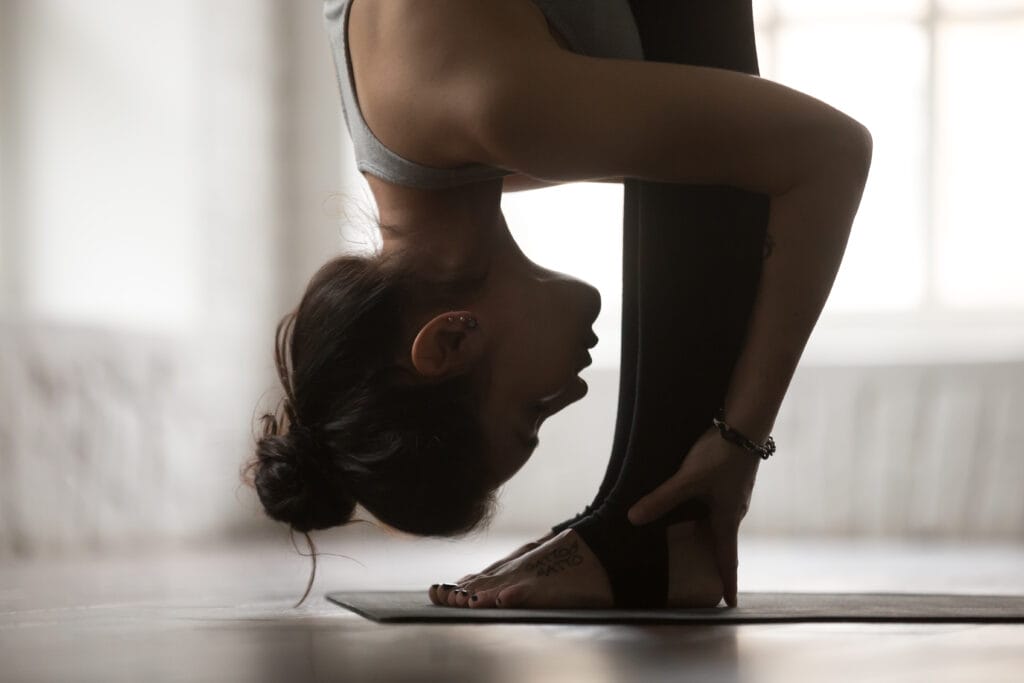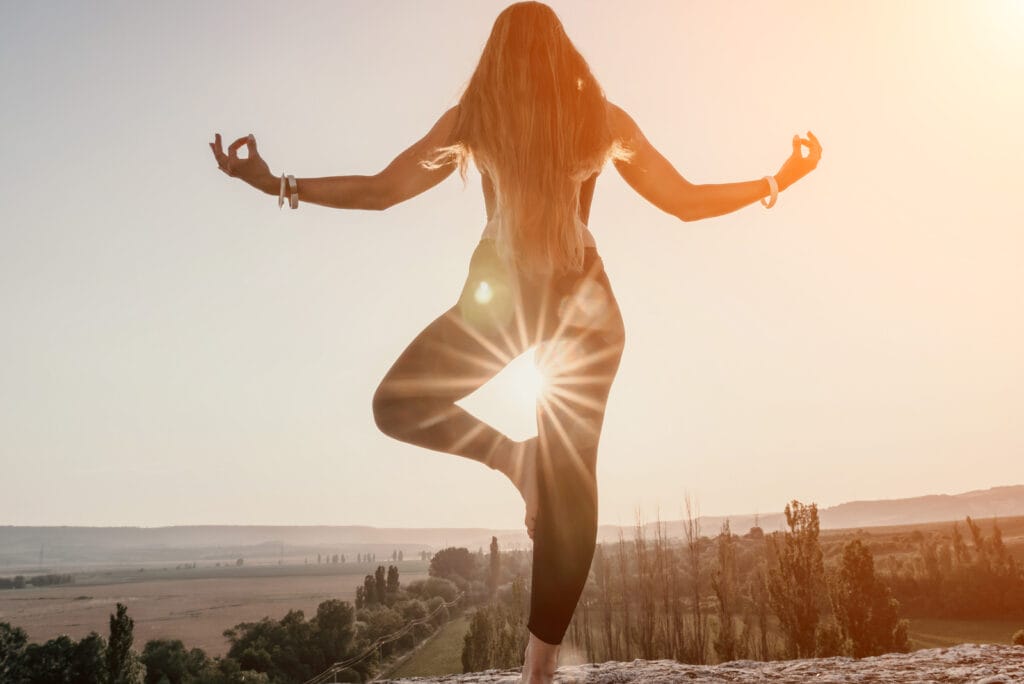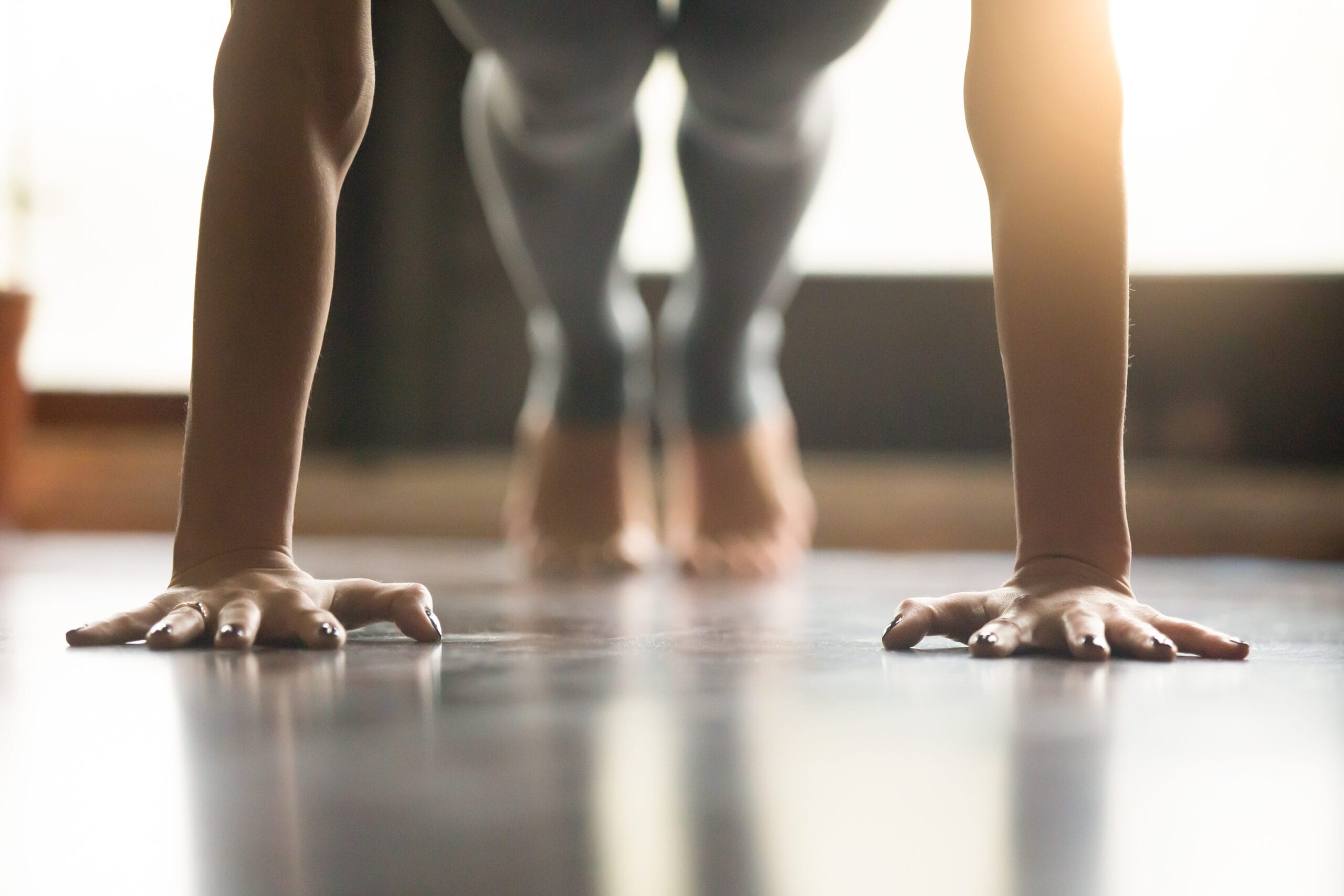
When it comes to home workouts, many of us are eager to dive straight into our exercises, overlooking the essential steps of warming up and cooling down.
And while it may seem tempting to skip these phases to save time or get right into the “meat” of our workout, understanding the significance of warming up and cooling down can make a world of difference in our fitness journey.
Not only can it help you prevent unwanted injury, but completing these steps can also help you improve performance and recover faster between workouts.
In other words, this is important stuff people.
Let’s dive into why these preparatory and concluding steps are a crucial part of working out from home.
Understanding the Basics: What Are Warm-Ups and Cool-Downs?
Before we get too far though, let’s clarify what warm-ups and cool-downs entail:
Warm-Up
This phase involves engaging in light aerobic activity, dynamic stretching, and movements that gradually increase heart rate, blood flow, muscle temperature, and joint mobility.
It prepares the body and mind for more intense exercises, enhancing performance and reducing the risk of injuries.
During the warm up, you’re basically getting your body ready for whatever exercise you’re about to do.
Cool-Down
The cool-down is the opposite of the warm-up and it occurs at the end of your session.
Post-workout, the cool-down phase involves performing low-intensity exercises to help gradually lower your heart rate back to its baseline.
The cool-down phase may consist of static/dynamic stretching, foam rolling, or a much lighter-duty variation of whatever exercise you were doing during your workout.
The goal here is to help ease muscle tension, improve flexibility, and facilitate recovery after your workout.
The Importance of Warming Up
Warming up gets your body and mind prepared for the workout to come, but more specifically:
Muscle Elasticity
When you engage in a warm-up, the increased blood flow to your muscles raises their temperature.
This elevated muscle temperature enhances muscle elasticity, making them more pliable and responsive to movements.
And this increased flexibility and range of motion reduces the likelihood of muscle strains, tears, or other soft tissue injuries during exercises that require dynamic movements or stretching.
Joint Flexibility
Similarly, warming up increases the flexibility and lubrication of your joints, reducing friction and resistance during movements.
This enhanced joint mobility and range of motion minimize the stress on ligaments, tendons, and cartilage, lowering the risk of sprains, strains, and overuse injuries associated with improper biomechanics or restricted movement patterns.
Joints, like muscles, need to warm up too – especially if you’re dealing with any range of motion limitations or joint related pain.
Improved Blood Flow
A comprehensive warm-up stimulates cardiovascular activity, enhancing blood circulation throughout your body.
Improved blood flow ensures that oxygen and nutrients are efficiently delivered to your muscles, tendons, ligaments, and connective tissues, promoting cellular function and repair.
Muscle Activation
As blood flow increases during a warm-up, your muscles become activated and prepared for the demands of exercise.
This activation facilitates neuromuscular coordination, motor unit recruitment, and proprioceptive awareness, ensuring that your muscles and brain are on the same page.
If you warm up effectively, you’re getting your neural system prepared to communicate effectively to execute movements with precision and control.
Mind-Body Connection
Beyond the physiological benefits, warming up fosters a mind-body connection as well.
It does this by allowing you to tune into your body’s sensations, limitations, and cues.
This heightened awareness enables you to identify any areas of tightness, discomfort, or imbalance, adjusting your movements, techniques, or intensity to mitigate potential risks or vulnerabilities.
Warming up gives you a chance to take your body for a test-drive to make sure it’s ready to take on whatever workout you’re planning on throwing at it.
Mental Preparedness
A warm-up also provides a transition period from rest to exercise, mentally preparing you for the upcoming workout.
This mental preparedness can help enhance things like focus, concentration, confidence, and motivation.
It can also help by empowering you to approach exercises with mindfulness, intentionality, and a positive mindset that prioritizes safety and technique.

The Significance of Cooling Down
Facilitating Muscle Recovery and Repair
Engaging in physical activity produces metabolic by-products such as lactic acid and other waste materials that accumulate in your muscles.
A cool-down phase can help facilitate the removal of these waste products by enhancing blood circulation.
And by expediting the clearance of metabolic waste, you may be able to help minimize muscle soreness, fatigue, and discomfort following a workout.
Which is another way of say it promotes faster recovery and tissue repair.
Incorporating relaxation techniques like deep breathing exercises and static stretching, during your cool-down can help alleviate muscle tension and tightness.
These practices promote muscular relaxation and flexibility, reducing the risk of muscle imbalances and chronic tension that can lead to discomfort, restricted movement, or injury over time.
Promoting Cardiovascular Recovery and Adaptation
A structured cool-down allows for a gradual reduction in heart rate, blood pressure, and body temperature, facilitating cardiovascular recovery and adaptation.
This gradual transition from exercise to rest minimizes stress on the cardiovascular system and helps support autonomic balance.
Incorporating light aerobic activity, gentle movements, or relaxation exercises during the cool-down phase promotes blood circulation, oxygen delivery, and nutrient transport to your muscles and other tissues.
This enhanced circulation can help support cellular repair and metabolic processes, optimizing recovery, and adaptation to the physiological demands of exercise.
Improving Flexibility, Range of Motion, and Joint Mobility
Implementing static stretching exercises during your cool-down phase targets major muscle groups, connective tissues, and joints, enhancing flexibility and range of motion.
These stretching techniques can help alleviate muscle tightness, improve muscular balance, and prevent the risk of muscle imbalances.
Stretching can also help with postural deviations, and other dysfunctions that can lead to injuries or movement restrictions over time.
Incorporating mobility exercises, like myofascial release techniques or foam rolling, can help support the health and elasticity of your connective tissues, including tendons, ligaments, and fascia.
By promoting optimal connective tissue function and structure, you minimize the risk of overuse injuries, degenerative changes, or structural impairments associated with repetitive movements or stresses.
Practical Tips for Effective Warm-Ups and Cool-Downs at Home
Ok, now that we understand why warming up and cooling down during workouts is so important, let’s go over some practical tips we can use in our own home gyms.
1. Gradual Intensity
Incorporating a warm-up allows for a gradual progression from low to high intensity, ensuring that your body adapts progressively to the demands of exercise.
Start slow and gradually bump up the intensity as you start warming up.
2. Functional Movement Patterns
By incorporating functional movements, dynamic stretches, and sport-specific exercises into your warm-up, you prepare your body for the specific movements and challenges associated with your workout.
This specificity enhances neuromuscular efficiency, movement quality, and coordination, ensuring that you perform exercises with proper form.
3. Duration
Aim for 5-10 minutes for both warm-up and cool-down phases, adjusting based on workout intensity, duration, and individual needs.
And keep in mind, the older you are, the more time you may need, especially for the warm-up.
As a man in my forties, I’m spending more time warming-up now than I ever have before – foam rolling, stretching, a few sets of low-weight lifts…
It takes more time (10 – 15 min for me), but it makes a huge difference with regards to my performance.
4. Dynamic Movements
Incorporate dynamic stretches, light aerobic activities (e.g., jogging, jumping jacks), and functional movements that mimic exercises in your workout routine.
Foam rolling would also count as a dynamic stretch and it’s a great way to loosen up muscles and joints at the same time.
When foam rolling, I’d spend 1-2 minutes for each body part and it works equally well as a warm-up and cool down.
5. Static Stretches
Include static stretches targeting major muscle groups, holding each stretch for 15-30 seconds, focusing on breathing, relaxation, and maintaining proper form.
I’d suggest starting with dynamic movements and then moving on to static stretches.
6. Hydration & Nutrition
Stay hydrated and make sure you’re eating a balanced diet to help fuel your body with the adequate nutrients it needs to recover.
You can use supplements like protein shakes, bars, and other goods to help make sure you’re getting enough of the good stuff, but a well-balanced diet with plenty of fruits and veggies can get the job done too.
7. Facilitating Mental Relaxation and Stress Reduction
Dedicate time during your cool-down phase to cultivate mindfulness, relaxation, and mental clarity through deep breathing exercises, meditation, or visualization techniques.
This intentional focus on mental relaxation and stress reduction can help promote emotional well-being.
It’ll also help foster a balanced, holistic approach to fitness that aligns with your physical, mental, and emotional needs, promoting overall health.
Final Thoughts
Incorporating warming up and cooling down phases into your home workouts is not merely a routine but a vital component of a comprehensive fitness regimen.
By prioritizing these preparatory and concluding steps, you can enhance performance, while minimize injury risks and supporting recovery.
It’ll also help you cultivate a balanced, sustainable approach to fitness that honors your body’s needs.
And I’ll be the first to admit that stretching isn’t the most exciting thing in the world, but it really does make a huge difference.
Especially as we get older.
And if you’re aren’t using one already, I highly recommend getting yourself a quality foam roller – I’ve been using mine for the last 15 years or so and it’s been a lifesaver.
Anyway, I encourage you to embrace the importance of warming up and cooling down and let these foundational practices guide you toward achieving your fitness goals for the long run.


